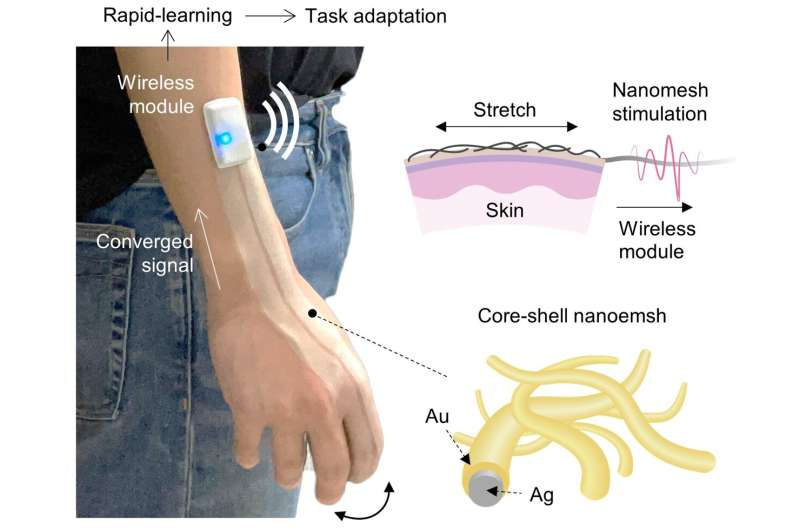

Researchers at Stanford University have developed smart skin, a new type of stretchable biomaterial that is sprayed onto the back of the hand like a suntan spray. Integrated into the mesh is a tiny electrical network that detects stretching and bending of the skin.
This new skin, which uses artificial intelligence, could help researchers understand numerous everyday tasks through hand movements and gestures. Scientists believe this could have applications and implications in fields such as gaming, sports, telemedicine, and robotics.
The innovation here is a sprayable, electrically sensitive mesh network embedded in polyurethane, a durable yet elastic material. The mesh is made up of millions of nanowires that contact each other to form dynamic electrical pathways. This mesh is electrically active, biocompatible, breathable, and stays put as long as it is not scrubbed with soap and water. This can closely match the wrinkles and folds of each human finger.
“As the finger bends and twists, the nanowires in the mesh press together and spread apart, changing the electrical conductivity of the mesh. By measuring and analyzing these changes, we can learn exactly how the hand, fingers, or joints are moving.” – explained Zhenan Bao, KK Lee Professor in the Department of Chemical Engineering and senior author of the study.
The researchers decided on an approach of spraying the mesh directly onto the skin to ensure it remained matrix-free. This key engineering solution eliminated unwanted motion inaccuracies and made it possible to generate multi-joint information of the finger using a single trace of a conductive mesh.
Machine learning allows computers to monitor changes in conductivity models and map these changing patterns to specific physical tasks and actions. For example, if you type X on your keyboard, the algorithm learns to recognize that action in variable patterns of electrical conductivity. Once the algorithm is trained properly, a physical keyboard is no longer needed. The same principles can also be used to recognize sign language or to recognize objects by tracing their external surfaces.


